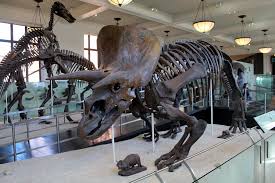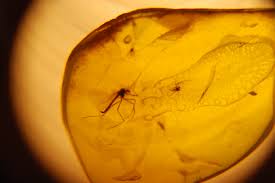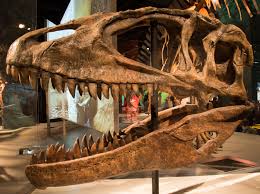Jurassic Park: The Caveats of De-Extiction

May 5, 2021
Dinosaurs. Massive beasts of a bygone era of prehistoric times, dragonflies the size of your head, trees shadowed by overgrown lizards, the very idea sparks the imagination. So it’s no surprise that Steven Spielberg’s 1993 film Jurassic Park was such a hit. I mean… who wouldn’t want to wander around an island rich with animals brought out of time?
We live in a modern era. New technological innovations seem to pop up every time you blink. We’re constantly testing the limits of our world, of the laws and science that govern it. So is there something to Mr. DNA’s talk on splicing up dino DNA from a couple of mosquitoes preserved in amber? And if there is… could we see some sort of a Jurassic Park in the future (barring any sort of major issues like I don’t know, the obvious dangers of creating a dinosaur theme park)?
in the future (barring any sort of major issues like I don’t know, the obvious dangers of creating a dinosaur theme park)?
 in the future (barring any sort of major issues like I don’t know, the obvious dangers of creating a dinosaur theme park)?
in the future (barring any sort of major issues like I don’t know, the obvious dangers of creating a dinosaur theme park)?First of all let’s state the obvious: dinosaurs are old. So unbelievably old that, even if scientists were able to find perfectly preserved mosquitoes with blood, the DNA in that blood would probably not be good for anything besides guessing as to whether or not the blood came from a reptile or mammal. Why is this? Well DNA, like most things in your fridge, has an expiration date. This shelf life means that around the 500-year mark of dino DNA sitting in a mosquito, there’s not going to be much for scientists to work off of.
But hey, let’s give Mr. DNA some credit, the people at Jurassic Park accounted for some missing pieces in the DNA puzzle. All they had to do was take a bit of frog DNA (which realistically would not work as well as say, another reptilian or avian species), and pop in the missing pieces. Bam. You’ve got yourself a totally safe dinosaur perfect for all your whimsical dino dreams.
But there’s another problem. See, filling in these gaps in the DNA sounds great in theory, but not if you don’t know where those gaps are. To fully sequence the DNA, you’d need a perfectly intact piece to compare it to (think doing a super complex puzzle without having a picture on the box).
don’t know where those gaps are. To fully sequence the DNA, you’d need a perfectly intact piece to compare it to (think doing a super complex puzzle without having a picture on the box).
 don’t know where those gaps are. To fully sequence the DNA, you’d need a perfectly intact piece to compare it to (think doing a super complex puzzle without having a picture on the box).
don’t know where those gaps are. To fully sequence the DNA, you’d need a perfectly intact piece to compare it to (think doing a super complex puzzle without having a picture on the box).So let’s just say that scientists were able to fight through the obvious headache of sequencing fragile prehistoric DNA. Let’s just say that they made it to the point of having a dinosaur sitting right there with them in the lab. What now?
Now you have a creature that was built to survive in a completely different environment and time period, watching you scroll through the internet. It’s safe to say that they’d be put in a position where they’d need to find some sort of a place in the modern environmental world. Back to the point of dinosaurs being old, many environments of current species are threatened by modern human society. We’ve got cities and towns, pushing on the natural habitats of species in a way that either has them merging with us or moving elsewhere. Even if there was a natural space set aside for dinosaurs to enjoy, they’d be put in an ecosystem that isn’t prepared for them. They’d take up some position on the food chain, which has the potential to completely throw the balance of niches and animal populations out of whack. And (a few spoilers for Jurassic Park here), there could be major issues controlling the population of that dinosaur species.
So Mr. DNA’s simple explanation for the creation of dino DNA is flawed, but even if there was a means to create dinosaurs. Would it be worth the risk to the current natural populations to introduce a species from prehistoric times, just for snapping pictures?
SOURCES:
https://www.sciencemag.org/news/2016/09/should-we-bring-extinct-species-back-dead
https://www.smithsonianmag.com/science-nature/these-are-extinct-animals-we-can-should-resurrect-180954955/
https://www.nhm.ac.uk/discover/could-scientists-bring-dinosaurs-back.html#:~:text=While%20dinosaur%20bones%20can%20survive,be%20to%20reverse%2Dengineer%20one.
https://ctsciencecenter.org/blog/decoding-dinosaur-genetics-in-jurassic-parkthe-science-behind-science-fiction/
